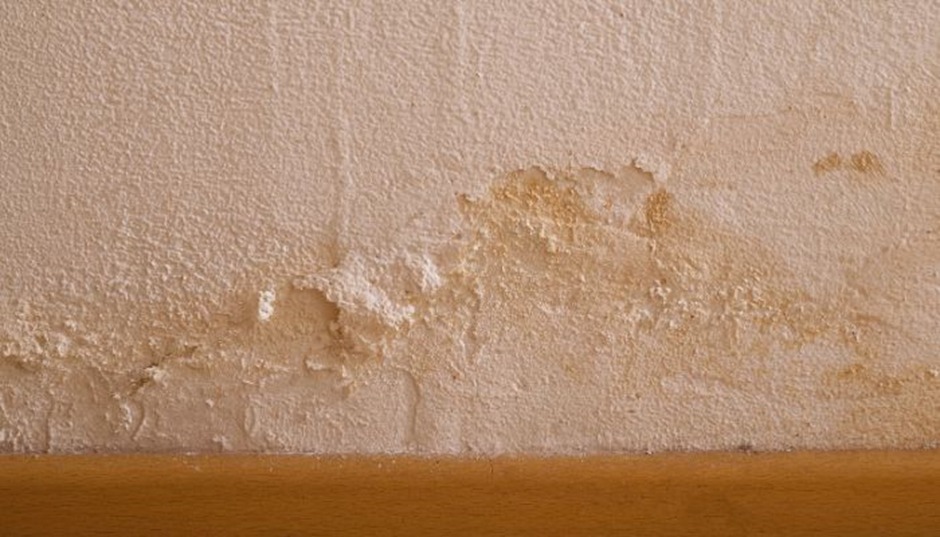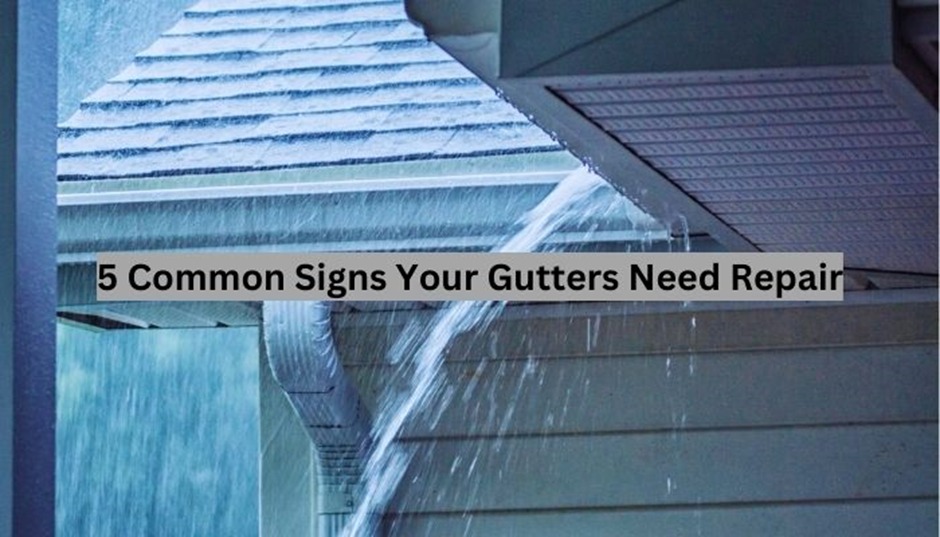Properly functioning gutters are essential for protecting your home from water damage. Over time, however, gutters can deteriorate due to weather conditions, debris buildup, and general wear and tear. Recognizing the signs that your gutters need repair can prevent minor issues from becoming major problems. Here are five common signs that indicate your gutters may need attention:
Leaks and Water Damage
One of the most apparent signs of gutter issues is leaks. If you notice water stains on your exterior walls or pooled water around your foundation, it’s a clear indication that your gutters might be leaking. These leaks often result from cracks, holes, or separations at the joints of your gutter system, preventing water from flowing smoothly through the gutters and downspouts.
Why Leaks Occur:
Leaks can develop due to various reasons, such as age-related wear and tear, damage from falling branches, or freezing and thawing cycles that cause the material to expand and contract. Over time, the sealant used at the joints and seams can degrade, leading to gaps where water can escape. Additionally, if gutters are not cleaned regularly, the buildup of leaves and debris can cause water to back up and spill over the edges, leading to leaks.
How to Address Leaks:
For minor leaks, you can use a gutter sealant to patch small holes and cracks. Clean the affected area thoroughly, apply the sealant, and allow it to dry. For larger holes or separations, you may need to replace sections of the gutter. Regular maintenance, including cleaning and inspecting your gutters, can help prevent leaks by ensuring water flows freely through the system.

Sagging Gutters
Gutters should remain straight and securely attached to your home. If you see gutters pulling away from your house or sagging in the middle, it indicates a problem. Sagging is typically caused by the weight of debris, standing water, or loose brackets and fasteners. This can lead to improper water drainage and potential damage to your home’s foundation.
Causes of Sagging:
Debris buildup, such as leaves, twigs, and dirt, can add significant weight to gutters. When gutters are clogged, water cannot drain properly and adds additional weight, causing the gutters to sag or pull away from the house. Inadequate support from brackets and fasteners can also contribute to sagging gutters. If the brackets are spaced too far apart or have become loose over time, the gutters may not be able to support the weight.
Solutions for Sagging Gutters:
To fix sagging gutters, start by removing any debris and ensuring the gutters are clean. Check the brackets and fasteners and tighten or replace any that are loose or damaged. You may need to add additional brackets for better support. Ensure the gutters are properly pitched toward the downspouts to facilitate proper water flow and prevent standing water.
Rust and Corrosion
Visible rust spots or flaking paint on your gutters indicate rust and corrosion. This occurs when the protective coating on the metal wears away, exposing it to moisture. Rust weakens the metal and can lead to holes and leaks, compromising the gutter system’s effectiveness.
Why Rust and Corrosion Happen:
Gutters are exposed to the elements year-round, and over time, the protective coating that prevents rust can wear off. This exposure, combined with constant contact with water, leads to the formation of rust. Poor maintenance, such as infrequent cleaning, can accelerate this process, as standing water and wet debris create a conducive environment for rust.
Preventing and Repairing Rust:
Regularly inspecting your gutters for signs of rust and promptly addressing any issues can prevent further deterioration. For minor rust spots, use a wire brush to remove the rust and apply a rust-inhibiting primer and paint. This will restore the protective coating and extend the life of your gutters. Severely corroded sections should be replaced to ensure the gutter system remains functional.

Peeling Paint and Mildew
Peeling paint near your gutters or mildew growth near the base of your home can be signs of consistent water exposure from leaks or improper drainage. These issues not only affect the appearance of your home but can also lead to more severe problems, such as wood rot and structural damage.
Causes of Peeling Paint and Mildew:
When gutters leak or overflow, water can run down the exterior walls of your home, causing the paint to peel and mildew to grow. This is often due to clogged gutters, improper gutter installation, or damaged gutters that fail to channel water away from the house. Mildew thrives in moist environments, and areas with poor drainage are particularly susceptible.
Addressing Peeling Paint and Mildew:
Repair any leaks in the gutters and ensure proper water flow. Clean the affected areas with a mildew remover and repaint with weather-resistant paint. Improving drainage around your home by extending downspouts away from the foundation and ensuring the ground slopes away from the house can help prevent mildew growth. Regular gutter maintenance and cleaning are essential to prevent these issues.

Foundation Issues
Cracks in your foundation or basement flooding can signal gutter problems. When gutters don’t direct water away from your home properly, it can pool around the foundation, leading to structural damage. Foundation issues are serious and can compromise the stability of your home.
How Gutters Affect Foundations:
Gutters are designed to collect rainwater and direct it away from your home. When they fail to do so, water can accumulate around the foundation, causing the soil to expand and contract. This movement can lead to cracks in the foundation and basement walls. Prolonged exposure to water can also erode the soil, undermining the foundation and leading to significant structural issues.
Preventing Foundation Problems:
To prevent foundation issues, ensure your gutters are free of debris and functioning correctly. Downspouts should extend at least 6-10 feet away from the foundation to direct water safely away from your home. Installing gutter extensions or splash blocks can help manage water flow. Regularly inspect your foundation for any signs of cracking or water intrusion and address these issues promptly.
Conclusion
Regular inspection and maintenance of your gutters are crucial for protecting your home from water damage and avoiding costly repairs. By recognizing and addressing these common signs of gutter problems—leaks, sagging, rust, peeling paint, mildew, and foundation issues—you can maintain the integrity of your gutter system and ensure your home remains safe and sound.
Investing time and effort in gutter maintenance not only prolongs the life of your gutters but also safeguards your home’s foundation, walls, and roof from potential damage. Whether you choose to perform these tasks yourself or hire a professional, staying vigilant about gutter health is essential for preventing minor issues from escalating into major problems. Regular cleaning, inspections, and timely repairs will keep your gutters functioning optimally and protect your home from the elements.
Keep an eye for more news & updates on Discover Tribune!




